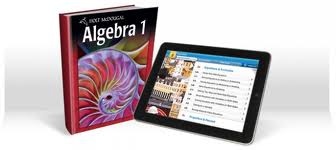This is an exciting time in the history of education to be a student or teacher. I’m a gadget fanatic, and this feels like the golden age of tech toys (…I mean tools) for learning.
Students who are heading off to college have a number of tech options for buying or renting textbooks: CourseSmart, Inkling, Kno, Amazon, Barnes & Noble, and the list goes on.
Some lucky Junior High and High School students will get to use a new textbook app in math this year. Houghton, Mifflin, Harcourt released its first full textbook app for the iPad called HMH Fuse: Algebra 1, and a Geometry text is also in the works. Check out my review:
I think tech toys make any job more enjoyable. I’ve spent my summer break using my phone, tablet, netbook, and desktop to prepare for the upcoming school year. My preparations have included researching teaching strategies, writing curriculum, and lesson planning. If I had to do any of these tasks without my tech, it would be a major chore.
I hope these tech tools and apps are as helpful and engaging for today’s students as they have been for me.


